Porte Sante Cemetery, Florence
Located a few minutes’ walk away from Piazzale Michelangelo, The Porte Sante Cemetery (the Holy Gates) of Florence is a special place for several reasons. Not only is it one of the greatest monumental cemeteries in Tuscany, rich in artworks and being the final resting-place for many important figures, it stands in a position of immense grandeur. Stretching all around the fortified ramparts surrounding the basilica and monastery of San Miniato al Monte, the cemetery boasts truly majestic view.
You might also be interested into the English Cemetery of Florence
The Porte Sante Cemetery of Florence
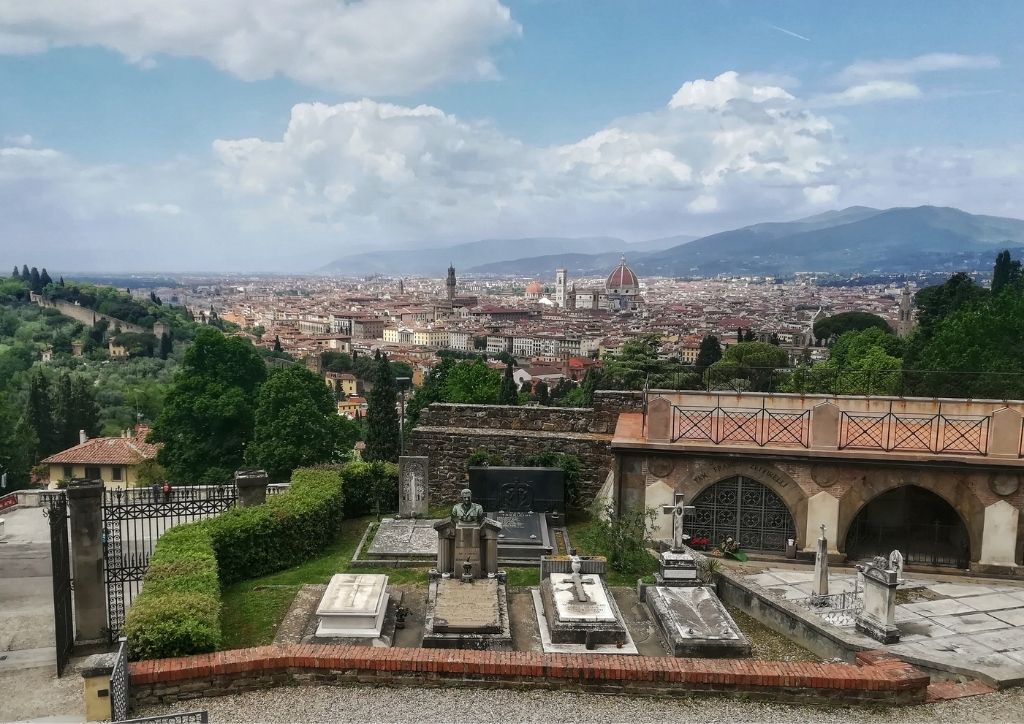
Inaugurated in 1848 according to the design of Niccolò Matas (architect of the Santa Croce façade), the cemetery has from this date through to the present been the premier site of interment for those illustrious Catholic Florentines deemed worthy of its soil. The graves are highly varies: there are poignant gravestones, elegant private chapels, and simple columbaria.
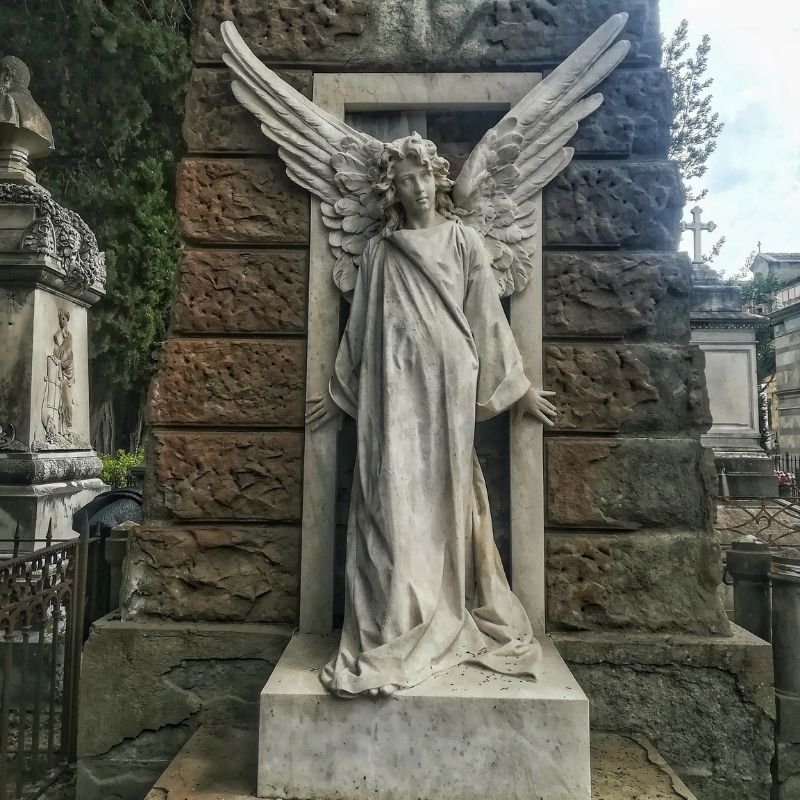
Famous People buried at the Porte Sante Cemetery
Perhaps most famous of the personalities buried here is Carlo Lorenzini, better known as Carlo Collodi. The creator of Pinocchio rests in his family’s neo-classical chapel, on the gate of which is a drawing of the world’s most beloved puppet. Close by is the tomb of Lorenzo Bertelli, aka Vamba, the author of my absolute favorite children’s books, Il Giornalino di Gian Burrasca.
- Learn more about Pinocchio in Florence!
Among the three thousand buried here are influential artists such as Libero Andreotti, Pietro Annigoni, and Ottone Rosai, writers like Vasco Pratolini, and important Florentines like Giovanni Spadolini and filmmaker Mario Cecchi Gori. Also here are the tombs of Pellegrino Artusi (the father of Italian cuisine), famous fashion designer Enrico Coveri, the patriot Ciro Menotti, and Felice Le Monnier. I have pointed out just some of the most celebrated figures buried here; to walk through the Porte Sante is truly to walk through the modern history of Florence, and even Italian, art and culture.
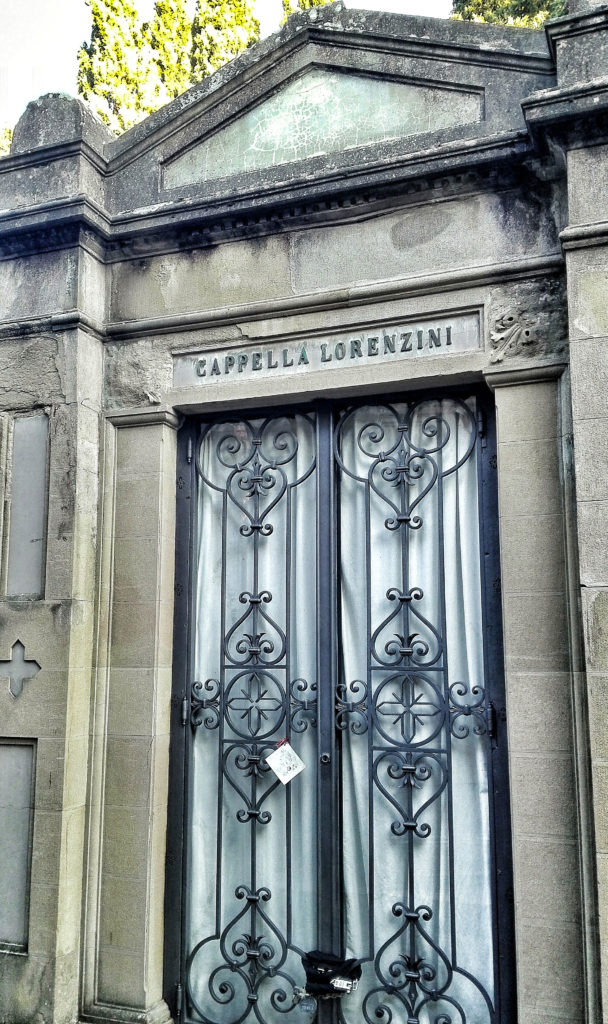
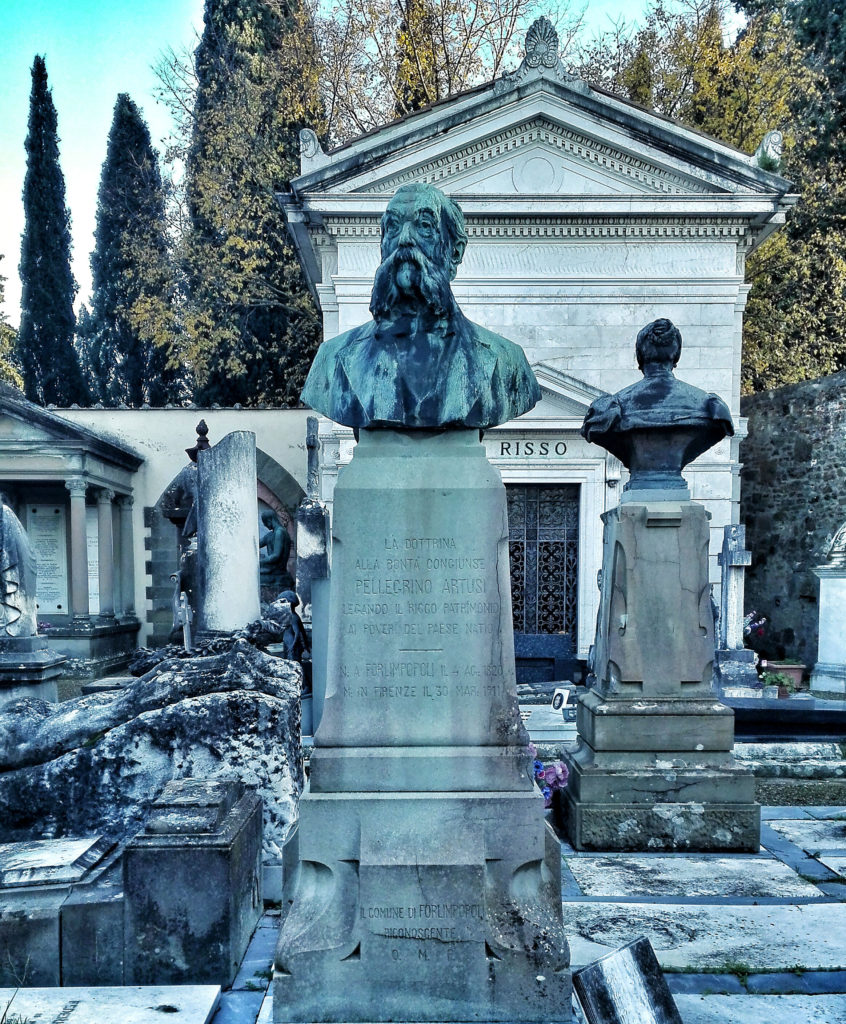
Special Tombs
The Porte Sante cemetery’s various funerary monuments cover a broad range of styles, many having been created by major artists. The site has therefore become a museum of sculpture.
There are hundreds of noteworthy creations – a full report would require many, many pages – but the romantic nineteenth-century designs adorned with symbols, allegorical figures, and sentimental portraits are probably the most striking.
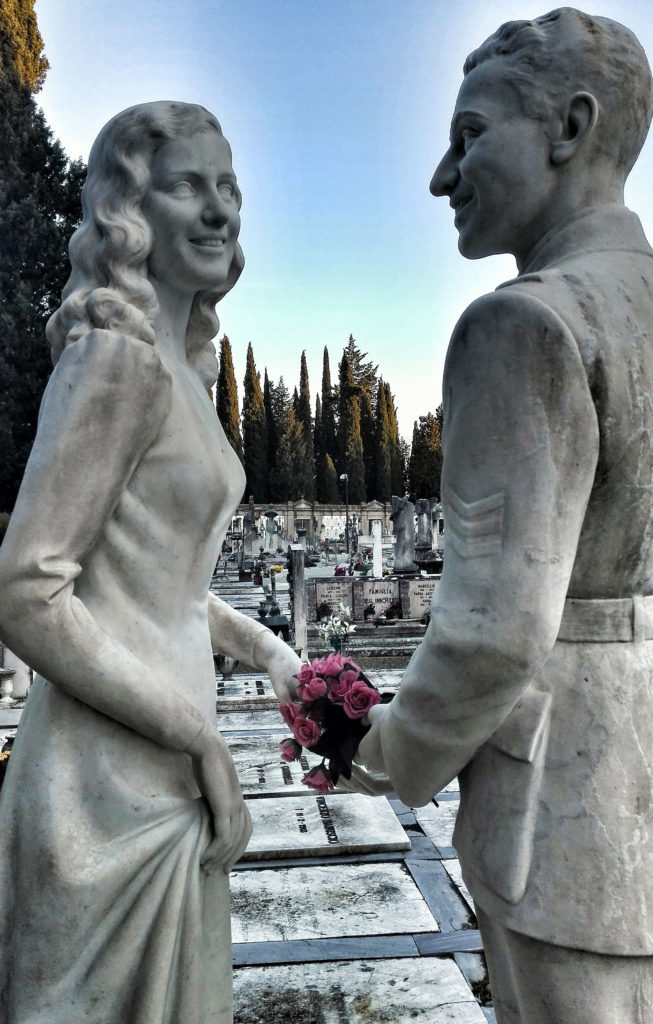
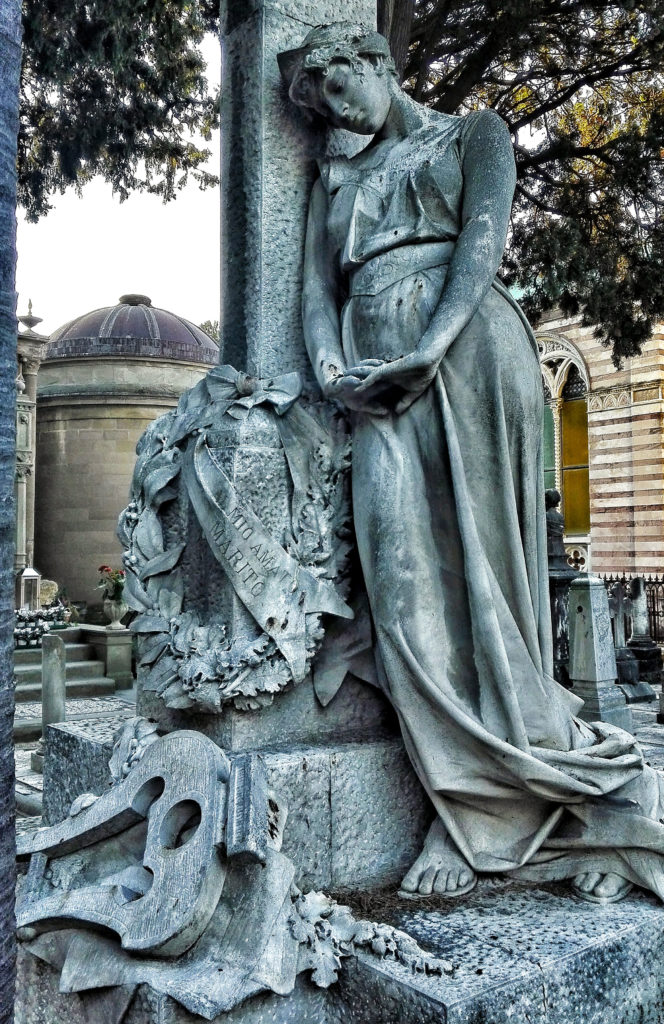
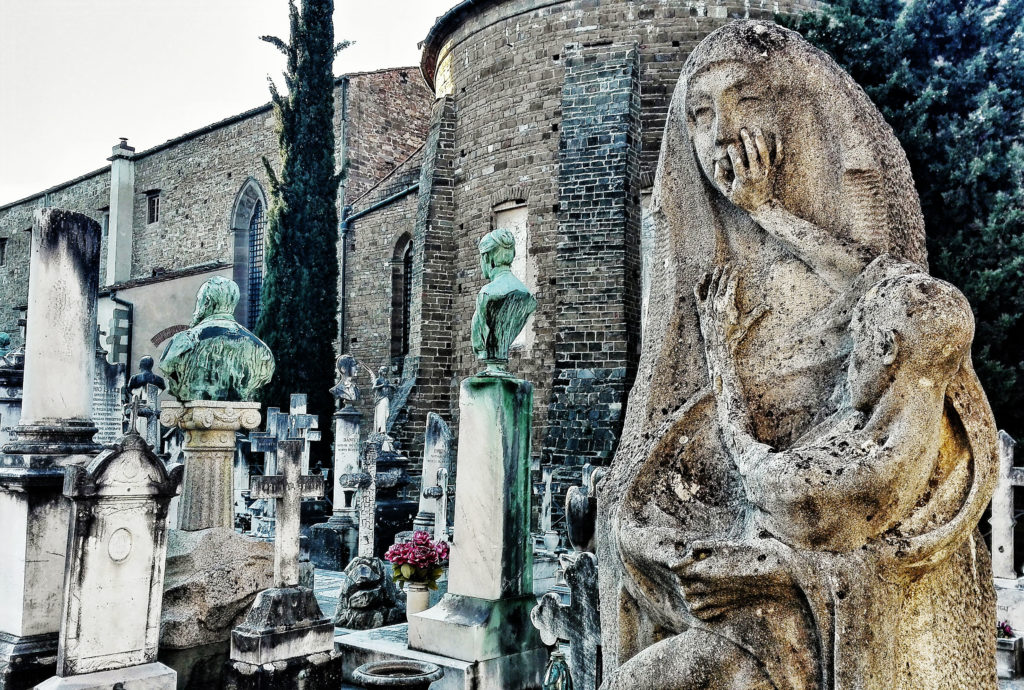
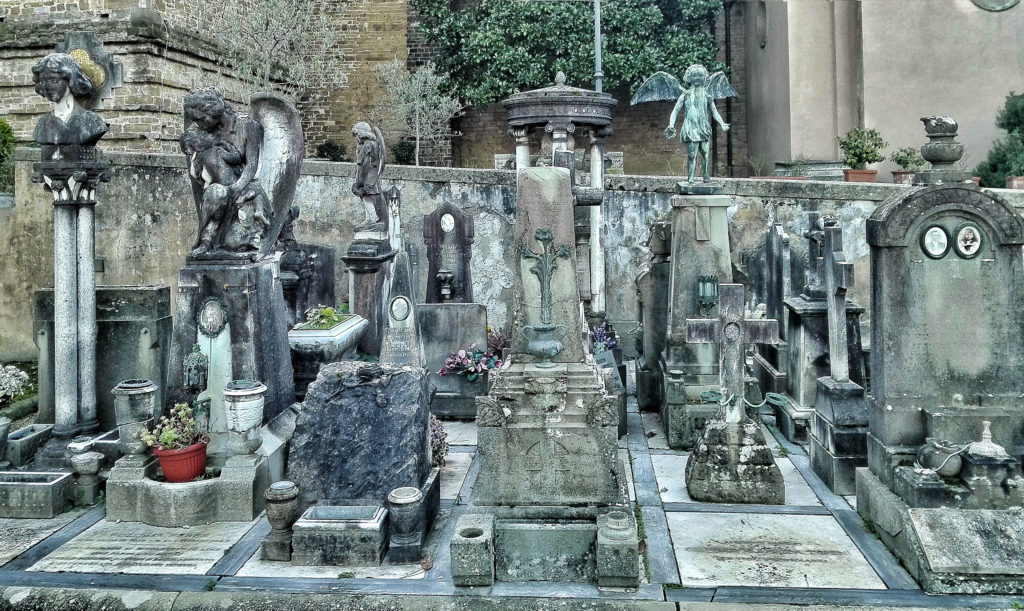
Notable Funeral Chapels
In addition to the sculptural works, the Porte Sante serves in effect as a catalog of architecture. There are dozens of private chapels that are miniature architectural masterpieces, often breaking sharply with conventional graveyard aesthetics. Many recall medieval and renaissance Florentine traditions, while others are of internationally popular styles of their time of construction, such as neoclassicism, liberty (an Italian analogue to art nouveau), and eclecticism.
My favorite is the Pettini Chapel, which combines neo-gothic and art deco structural features with a taste for the exotic in an eclectic mix. The ceramics were designed by Galileo Chini, and the lions are the very same he used to decorate the baths of Salsomaggiore.
Galileo Chini also decorated the stunning Monumental Cemetery of Antella. For more infos (and private tours!) about the Antella Cemetery read my post on Florence Cemeteries.
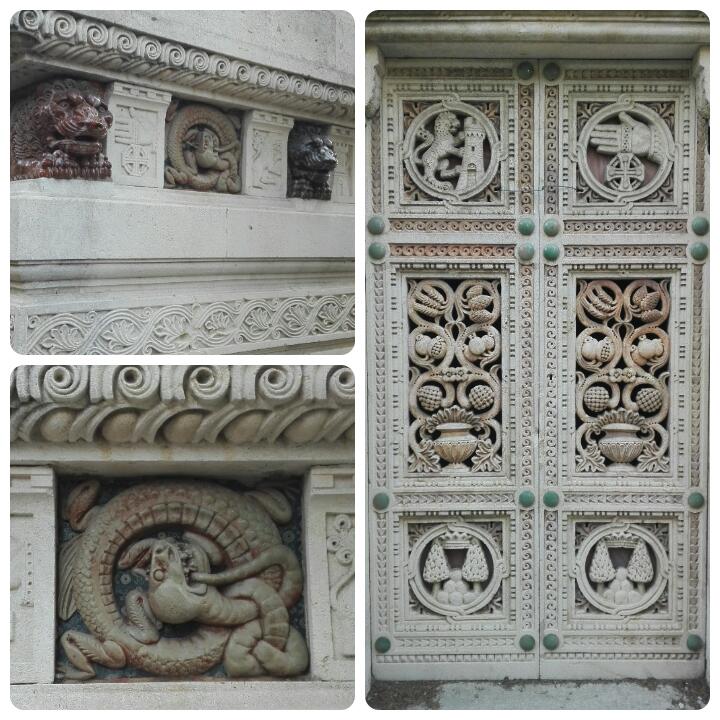
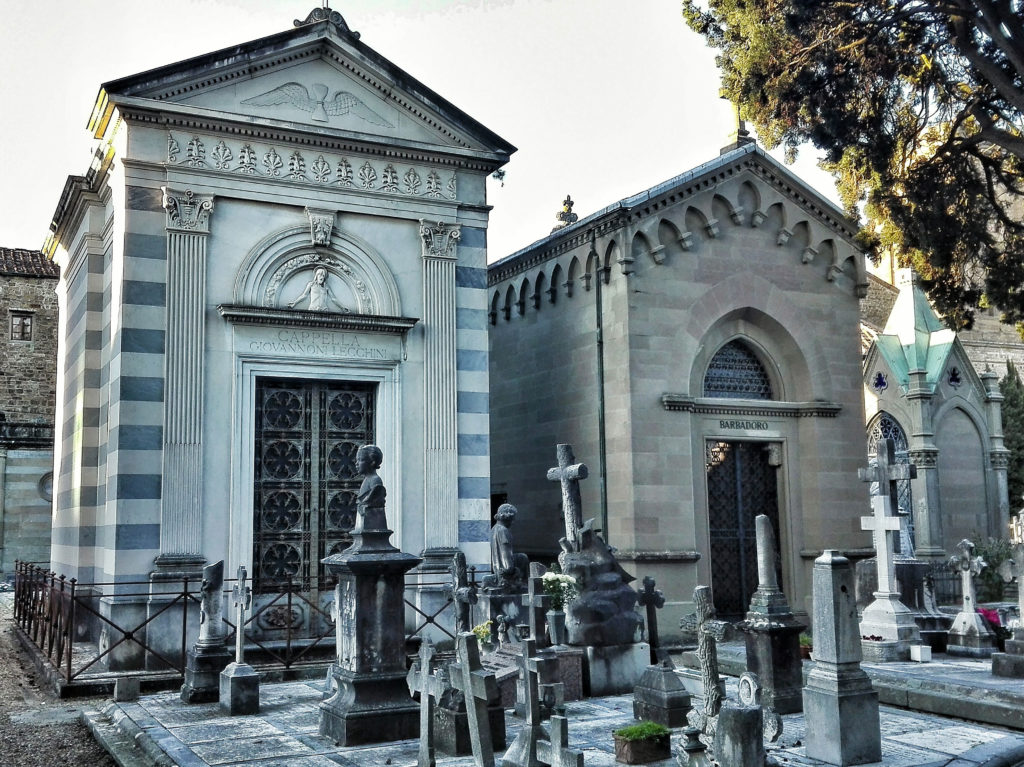
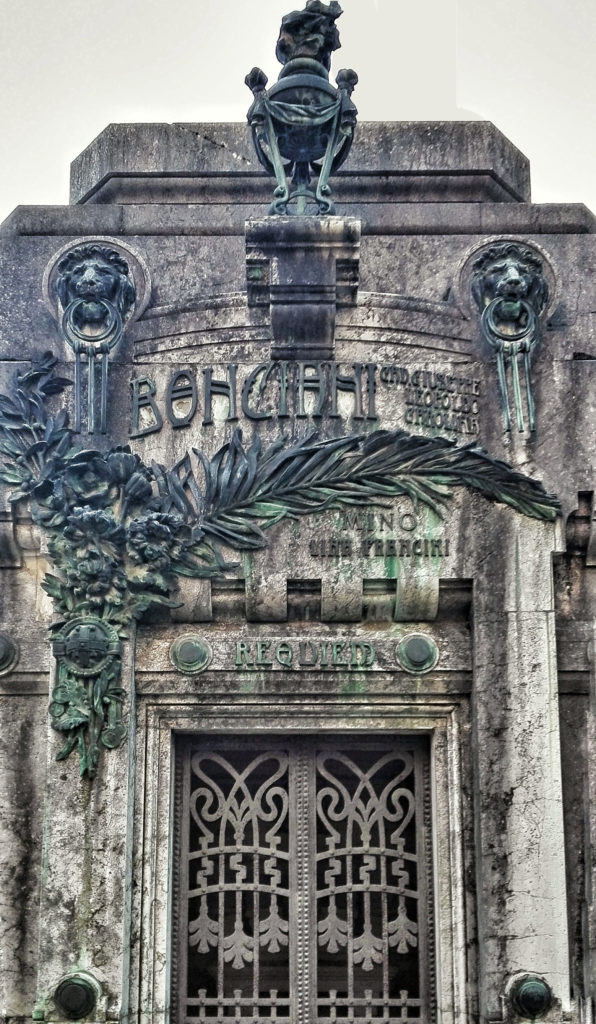
I like this place so much that I give private tours of the Porte Sante Cemetery of Florence.
Private tours of the Porte Sante Cemetery
The private tour of the Porte Sante Cemetery includes the visit to the close-by medieval church of San Miniato al Monte and piazzale Michelangelo.
- Duration: 2 hours
- Meeting point: Church of San Miniato al Monte
- Included: your local tour guide
- Not included: transportation
If you are interested into this tour or you want more information feel free to email me using this form! Also check my other cemetery tours in Florence.